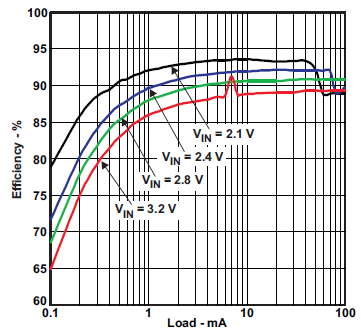If you are a designing a fitness band, smartwatch, heart-rate monitor, portable medical equipment or car-ignition starter, what is your biggest concern? Most likely, it’s how to elongate the operating life of the wearable or ignition starter.
There are multiple options available to solve this problem:
- Use bigger batteries for the ignition starter.
- Reduce the system leakage current.
- Keep the device in low-power mode for the maximum amount of time.
All of these options are really good options, but they all come with a hefty price tag. For example, bigger batteries mean heavier, bigger systems. Reduced leakage currents mean a state-of-the-art power intellectual property (IP). Keeping the system in low-power mode means extremely sensitive and state-of-the-art touch sensors to activate or deactivate the system.
The solution to this problem can be very simple if you optimize the system to operate in such a way that it can squeeze the juice out of the battery to the very last bit. Most battery-powered systems operate in the range of 4.5V - 3.3V. But what if you allow the system to run up to 1.8V and consume every bit of power in the battery on the charge cycle?
An integrated power-management device like the TPS80010 or TPS65720 allows you to operate the system with a low-input voltage at down to 1.8V; it also provides efficiency of 91%. This surely will reduce costs for your system by avoiding the use of fancy IPs.
Figure 1: Efficiency v. load current
As shown in Figure 1, high efficiency on the buck and boost converters limits power-conversion losses, enabling the extension of battery life. An integrated PMIC like the ones mentioned above feature a battery-voltage monitor switch to briefly check battery lifetime. The integrated false-load switch connects a specified load to the battery. When this false load is applied, the battery monitor switch turns on, gating the sensed battery voltage to the analog to digital converter (ADC) in the system. Based on this measurement, the system can determine the battery impedance, and hence, battery health. Last but not least, the small footprint allows you to optimize your board and make the system lighter!
Is 1.8V low enough for your system to squeeze every ounce from the battery?
Additional resources:
- Start designing with the TPS65270 two-channel PMIC
- Sample and purchase the TPS80010
- Sample and purchase the TPS65720


